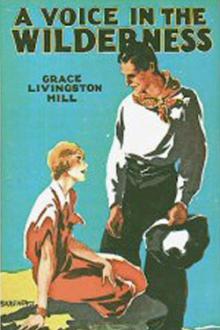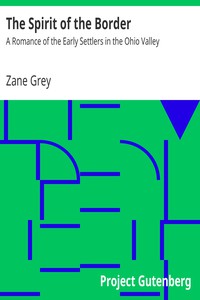Astoria; Or, Anecdotes of an Enterprise Beyond the Rocky Mountains, Irving [libby ebook reader txt] 📗

- Author: Irving
Book online «Astoria; Or, Anecdotes of an Enterprise Beyond the Rocky Mountains, Irving [libby ebook reader txt] 📗». Author Irving
The next morning they resumed their wayfaring, hungry and jaded, and had a dogged march of eighteen miles among the same kind of hills. At length they emerged upon a stream of clear water, one of the forks of Powder River, and to their great joy beheld once more wide grassy meadows, stocked with herds of buffalo. For several days they kept along the banks of the river, ascending it about eighteen miles. It was a hunter’s paradise; the buffaloes were in such abundance that they were enabled to kill as many as they pleased, and to jerk a sufficient supply of meat for several days’ journeying. Here, then, they reveled and reposed after their hungry and weary travel, hunting and feasting, and reclining upon the grass. Their quiet, however, was a little marred by coming upon traces of Indians, who, they concluded, must be Crows: they were therefore obliged to keep a more vigilant watch than ever upon their horses. For several days they had been directing their march towards the lofty mountain descried by Mr. Hunt and Mr. M’Kenzie on the 17th of August, the height of which rendered it a landmark over a vast extent of country. At first it had appeared to them solitary and detached; but as they advanced towards it, it proved to be the principal summit of a chain of mountains. Day by day it varied in form, or rather its lower peaks, and the summits of others of the chain emerged above the clear horizon, and finally the inferior line of hills which connected most of them rose to view. So far, however, are objects discernible in the pure atmosphere of these elevated plains, that, from the place where they first descried the main mountain, they had to travel a hundred and fifty miles before they reached its base. Here they encamped on the 30th of August, having come nearly four hundred miles since leaving the Arickara village.
The mountain which now towered above them was one of the Bighorn chain, bordered by a river, of the same name, and extending for a long distance rather east of north and west of south. It was a part of the great system of granite mountains which forms one of the most important and striking features of North America, stretching parallel to the coast of the Pacific from the Isthmus of Panama almost to the Arctic Ocean; and presenting a corresponding chain to that of the Andes in the southern hemisphere. This vast range has acquired, from its rugged and broken character and its summits of naked granite, the appellation of the Rocky Mountains, a name by no means distinctive, as all elevated ranges are rocky. Among the early explorers it was known as the range of Chippewyan Mountains, and this Indian name is the one it is likely to retain in poetic usage. Rising from the midst of vast plains and prairies, traversing several degrees of latitude, dividing the waters of the Atlantic and the Pacific, and seeming to bind with diverging ridges the level regions on its flanks, it has been figuratively termed the backbone of the northern continent.
The Rocky Mountains do not present a range of uniform elevation, but rather groups and occasionally detached peaks. Though some of these rise to the region of perpetual snows, and are upwards of eleven thousand feet in real altitude, yet their height from their immediate basis is not so great as might be imagined, as they swell up from elevated plains, several thousand feet above the level of the ocean. These plains are often of a desolate sterility; mere sandy wastes, formed of the detritus of the granite heights, destitute of trees and herbage, scorched by the ardent and reflected rays of the summer’s sun, and in winter swept by chilling blasts from the snow-clad mountains. Such is a great part of that vast region extending north and south along the mountains, several hundred miles in width, which has not improperly been termed the Great American Desert. It is a region that almost discourages all hope of cultivation, and can only be traversed with safety by keeping near the streams which intersect it. Extensive plains likewise occur among the higher regions of the mountains, of considerable fertility. Indeed, these lofty plats of table-land seem to form a peculiar feature in the American continents. Some occur among the Cordilleras of the Andes, where cities, and towns, and cultivated farms are to be seen eight thousand feet above the level of the sea.
The Rocky Mountains, as we have already observed, occur sometimes singly or in groups, and occasionally in collateral ridges. Between these are deep valleys, with small streams winding through them, which find their way into the lower plains, augmenting as they proceed, and ultimately discharging themselves into those vast rivers, which traverse the prairies like great arteries, and drain the continent.
While the granitic summits of the Rocky Mountains are bleak and bare, many of the inferior ridges are scantily clothed with scrubbed pines, oaks, cedar, and furze. Various parts of the mountains also bear traces of volcanic action. Some of the interior valleys are strewed with scoria and broken stones, evidently of volcanic origin; the surrounding rocks bear the like character, and vestiges of extinguished craters are to be seen on the elevated heights.
We have already noticed the superstitious feelings with which the Indians regard the Black Hills; but this immense range of mountains, which divides all that they know of the world, and gives birth to such mighty rivers, is still more an object of awe and veneration. They call it “the crest of the world,” and think that Wacondah, or the master of life, as they designate the Supreme Being, has his residence among these aerial heights. The tribes on the eastern prairies call them the mountains of the setting sun. Some of them place the “happy hunting-grounds,” their ideal paradise, among the recesses of these mountains; but say that they are invisible to living men. Here also is the “Land of Souls,” in which are the “towns of the free and generous spirits,” where those who have pleased the master of life while living, enjoy after death all manner of delights.
Wonders are told of these mountains by the distant tribes, whose warriors or hunters have ever wandered in their neighborhood. It is thought by some that, after death, they will have to travel to these mountains and ascend one of their highest and most rugged peaks, among rocks and snows and tumbling torrents. After many moons of painful toil they will reach the summit, from whence they will have a view over the land of souls. There they will see the happy hunting-grounds, with the souls of the brave and good living in tents in green meadows, by bright running streams, or hunting the herds of buffalo, and elk, and deer, which have been slain on earth. There, too, they will see the villages or towns of the free and generous spirits brightening in the midst of delicious prairies. If they have acquitted themselves well while living, they will be permitted to descend and enjoy this happy country; if otherwise they will but be tantalized with this prospect of it, and then hurled back from the mountain to wander about the sandy plains, and endure the eternal pangs of unsatisfied thirst and hunger.
CHAPTER XXVIII. Region of the Crow Indians—Scouts on the Lookout—Visit From a Crew of Hard Riders.—A Crow Camp.—Presents to the Crow Chief.-Bargaining.-Crow Bullies.-Rose Among His Indian Friends.-Parting With the Crows.—Perplexities Among the Mountains.—More of the Crows.—Equestrian Children.—Search After Stragglers.
THE travellers had now arrived in the vicinity of the mountain regions infested by





Comments (0)